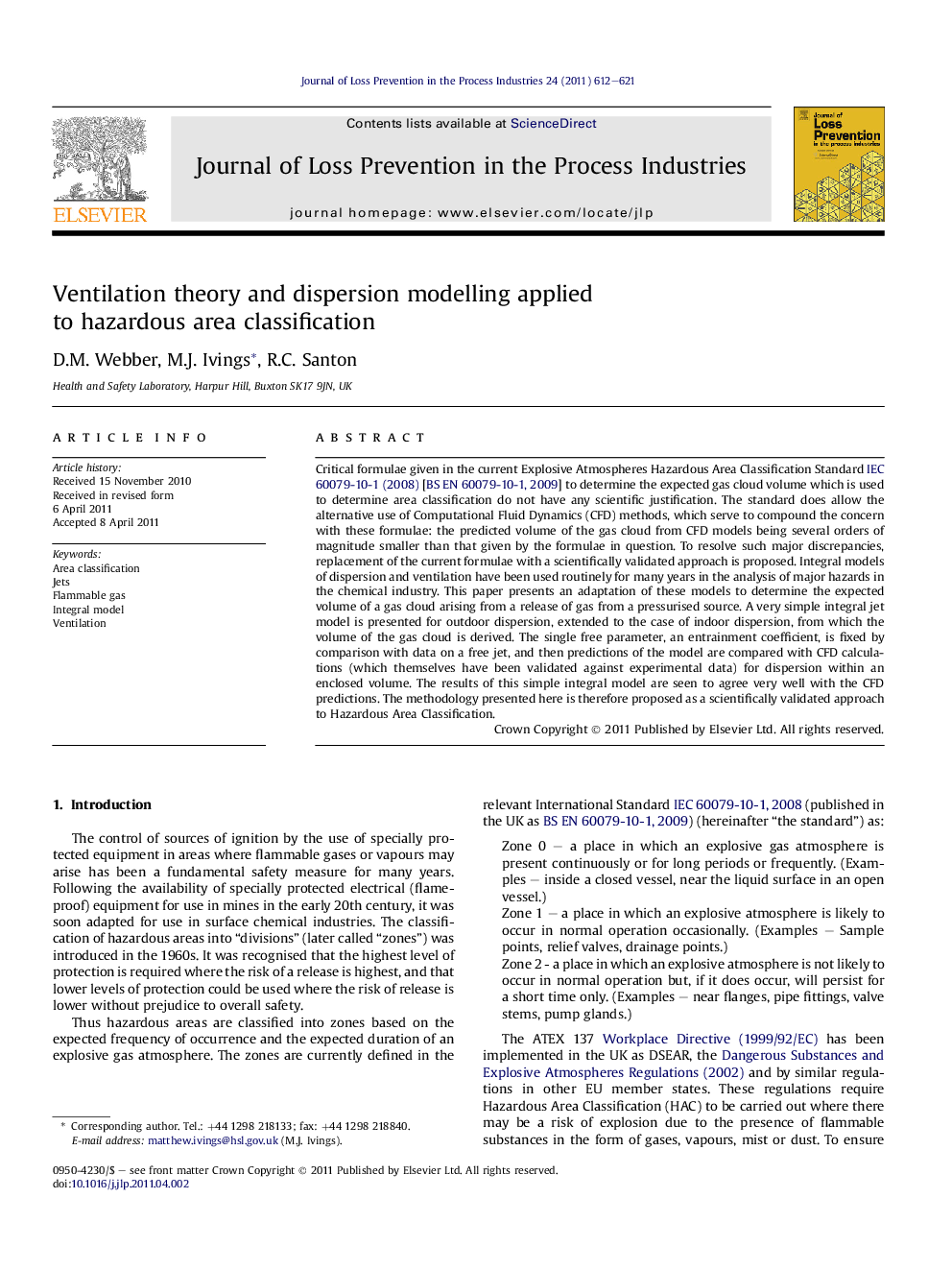| Article ID | Journal | Published Year | Pages | File Type |
|---|---|---|---|---|
| 587056 | Journal of Loss Prevention in the Process Industries | 2011 | 10 Pages |
Critical formulae given in the current Explosive Atmospheres Hazardous Area Classification Standard IEC 60079-10-1 (2008) [BS EN 60079-10-1, 2009] to determine the expected gas cloud volume which is used to determine area classification do not have any scientific justification. The standard does allow the alternative use of Computational Fluid Dynamics (CFD) methods, which serve to compound the concern with these formulae: the predicted volume of the gas cloud from CFD models being several orders of magnitude smaller than that given by the formulae in question. To resolve such major discrepancies, replacement of the current formulae with a scientifically validated approach is proposed. Integral models of dispersion and ventilation have been used routinely for many years in the analysis of major hazards in the chemical industry. This paper presents an adaptation of these models to determine the expected volume of a gas cloud arising from a release of gas from a pressurised source. A very simple integral jet model is presented for outdoor dispersion, extended to the case of indoor dispersion, from which the volume of the gas cloud is derived. The single free parameter, an entrainment coefficient, is fixed by comparison with data on a free jet, and then predictions of the model are compared with CFD calculations (which themselves have been validated against experimental data) for dispersion within an enclosed volume. The results of this simple integral model are seen to agree very well with the CFD predictions. The methodology presented here is therefore proposed as a scientifically validated approach to Hazardous Area Classification.
► This study is concerned with approaches to Hazardous Area Classification. ► A simple integral model is presented of gas jet releases in ventilated enclosures. ► The integral model is validated against data from a number of CFD simulations. ► The model provides a scientifically-based approach to Hazardous Area Classification.
